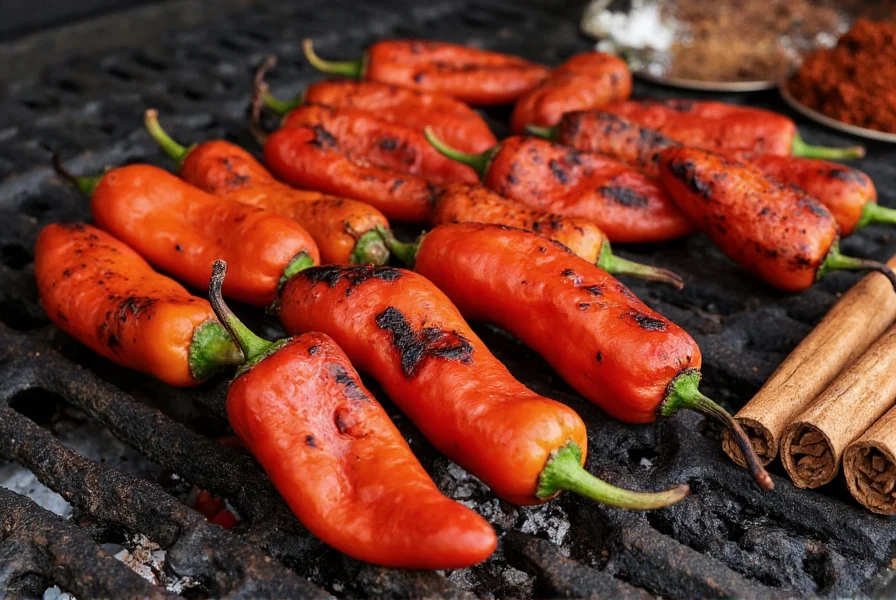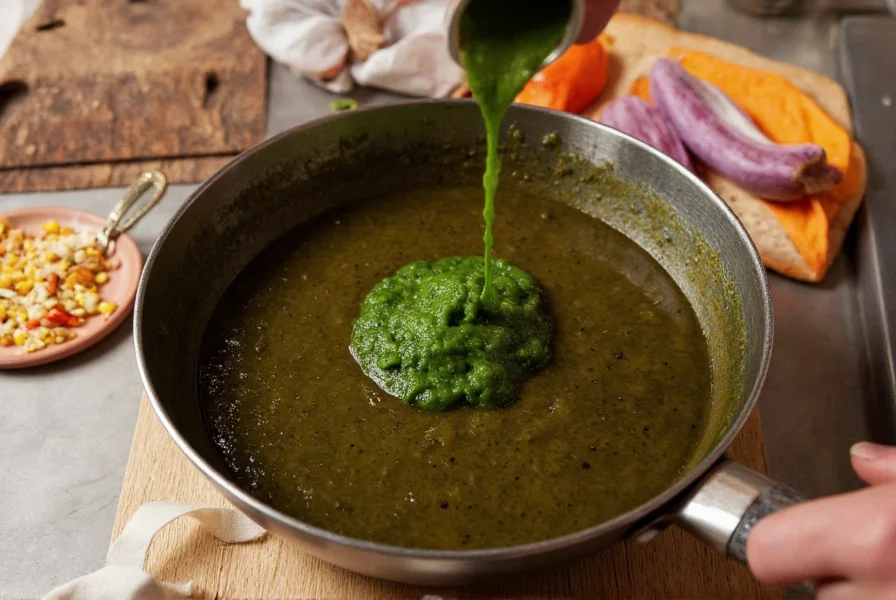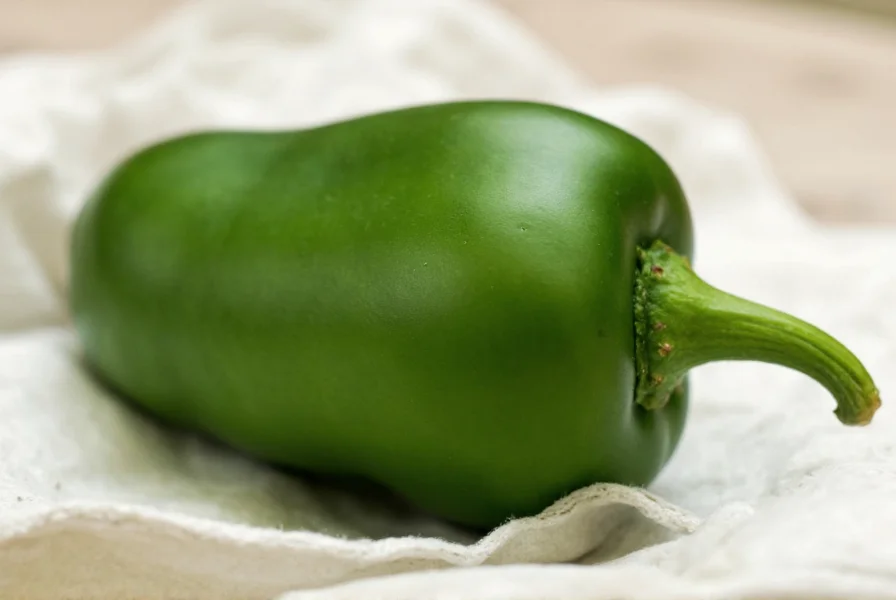The best poblano pepper substitutes are Anaheim peppers (similar mild heat and flavor), bell peppers (for zero heat), and Cubanelle peppers (close texture match). For recipes requiring roasted poblanos, canned green chiles offer the most convenient alternative with comparable flavor profile.
When your recipe calls for poblano peppers but you're staring at an empty produce section, knowing the right substitute can save your dish. Poblano peppers, with their distinctive earthy flavor and mild heat (1,000-2,000 Scoville units), play starring roles in many Mexican and Southwestern dishes. Understanding what makes them unique helps you select the perfect replacement without compromising your culinary creation.
Understanding Poblano Pepper Characteristics
Poblanos stand out for their rich, slightly sweet flavor with hints of earthiness and tobacco. Unlike many chili peppers, they bring mild heat that enhances rather than overwhelms dishes. When roasted, their skin develops a complex smoky dimension that's essential in traditional recipes like chiles rellenos and mole poblano. Fresh poblanos typically measure 4-6 inches long with a broad, heart-shaped profile and dark green color.
Before selecting a substitute, consider which aspect matters most for your specific recipe: heat level, flavor profile, texture, or roasting capability. This distinction determines whether you need a direct flavor match or can prioritize availability and convenience.
Top Poblano Pepper Substitutes Ranked
Not all substitutes work equally well in every application. The ideal replacement depends on your specific cooking needs and what's available at your local market.
| Substitute | Heat Level | Flavor Profile | Best For | Substitution Ratio |
|---|---|---|---|---|
| Anaheim peppers | 500-2,500 SHU | Mild, slightly sweet, similar earthiness | Stuffed peppers, sauces, roasting | 1:1 |
| Bell peppers (green) | 0 SHU | Sweeter, less complex | Stuffed peppers, salads, raw applications | 1:1 |
| Cubanelle peppers | 100-1,000 SHU | Mild, slightly fruity | Stuffed peppers, frying, sautéing | 1:1 |
| Canned green chiles | Varies (usually mild) | Smoky, roasted flavor | Sauces, soups, casseroles | 4oz can = 2-3 fresh poblanos |
| Jalapeños (reduced quantity) | 2,500-8,000 SHU | Grassy, sharper heat | Salsas, where heat is desired | ½ jalapeño = 1 poblano |
Best Substitutes for Specific Culinary Applications
For Stuffed Pepper Dishes
When preparing chiles rellenos or similar stuffed pepper recipes, maintaining the pepper's structural integrity matters as much as flavor. Anaheim peppers provide the closest match with their similar size and thick walls that hold up well to stuffing and baking. Cubanelle peppers work well too, though they're slightly thinner-walled. If using bell peppers, choose larger specimens and expect a sweeter, less complex flavor profile in your finished dish.
For Roasted Applications
The distinctive smoky flavor of roasted poblanos proves challenging to replicate. For authentic results, roast Anaheim peppers yourself rather than using pre-roasted alternatives. If time-constrained, high-quality canned green chiles (check labels for "Hatch" or "New Mexico" varieties) offer the most convenient solution. Avoid using bell peppers for roasting applications as they lack the necessary flavor complexity when charred.

For Salsas and Fresh Applications
When making fresh salsas or raw applications, flavor balance becomes critical. For mild salsas, bell peppers provide the safest option with zero heat. If you want to maintain some warmth, use half the amount of jalapeño compared to what the recipe specifies for poblanos. Remove seeds and membranes from jalapeños to reduce heat while preserving flavor. Cubanelle peppers shine in fresh applications where you want mild heat with good texture.
For Soups, Stews, and Sauces
Canned green chiles represent the most practical solution for liquid-based dishes. They've already been roasted and peeled, saving significant preparation time. When substituting fresh alternatives in cooked dishes, add them earlier in the cooking process to allow flavors to meld properly. Anaheim peppers require about the same cooking time as poblanos, while bell peppers need less time to maintain texture.
Advanced Substitution Techniques
Professional chefs often employ these techniques to enhance substitute peppers and better approximate poblano flavor:
- Flavor boosting: When using bell peppers as a poblano substitute, add ¼ teaspoon of smoked paprika per pepper to introduce the earthy notes poblanos naturally provide
- Heat adjustment: If using jalapeños, remove all seeds and white membranes, then soak slices in cold salted water for 15 minutes to further reduce heat without sacrificing flavor
- Texture matching: For stuffed pepper applications with bell peppers, briefly blanch them in boiling water for 2 minutes to soften without losing structural integrity
- Flavor layering: When substituting milder peppers, add ½ teaspoon of cumin per serving to enhance the earthy profile characteristic of poblanos
When Substitutes Won't Work
Some traditional recipes simply require authentic poblano peppers. Mole poblano, where the pepper's unique flavor forms the foundation of the complex sauce, rarely succeeds with substitutes. Similarly, when preparing chiles en nogada (stuffed poblano peppers with walnut cream sauce and pomegranate seeds), the specific flavor and appearance of poblanos proves essential to the dish's identity. In these cases, seeking out authentic poblanos at specialty markets or adjusting your menu might yield better results than substitution.

Storage and Preparation Tips for Substitutes
Understanding proper storage extends the usability of your substitute peppers. Anaheim peppers keep for 1-2 weeks in the refrigerator's crisper drawer, while bell peppers last slightly longer at 2-3 weeks. For longer storage, roast and freeze substitute peppers in airtight containers for up to 6 months—this works particularly well with Anaheims as a poblano alternative. When preparing substitutes for roasting applications, leave the skin on during cooking, then remove it after charring for the most authentic texture.
Frequently Asked Questions
Can I substitute bell peppers for poblanos in chiles rellenos?
Yes, but with flavor adjustments. Green bell peppers work structurally for stuffed dishes, but lack the earthy flavor of poblanos. For better results, add ¼ teaspoon smoked paprika per pepper and use a slightly larger bell pepper to match the poblano's volume. The finished dish will be sweeter and less complex than traditional chiles rellenos.
What's the best canned alternative for fresh poblano peppers?
High-quality canned green chiles, particularly those labeled as Hatch or New Mexico varieties, provide the closest match to roasted poblanos. Look for cans specifying 'mild' heat level and check the ingredient list for just peppers, water, and salt. A standard 4-ounce can typically replaces 2-3 fresh poblanos in cooked dishes like sauces and soups.
How do I reduce the heat when substituting jalapeños for poblanos?
To safely substitute jalapeños for poblanos, use half the quantity called for and remove all seeds and white membranes. Soak the sliced jalapeños in cold salted water for 15 minutes before use to further reduce heat. For every poblano required, use approximately ½ jalapeño. This maintains some chili flavor while preventing excessive heat that would overwhelm your dish.
Can I use banana peppers as a poblano substitute?
Banana peppers make a poor direct substitute for poblanos due to their significantly sweeter flavor and different texture. They work only in applications where sweetness is desirable and heat isn't required, such as certain salads or pickled preparations. For most savory Mexican dishes requiring poblanos, Anaheim or Cubanelle peppers provide far better alternatives with more similar flavor profiles.
What's the difference between Anaheim and poblano peppers?
While often used interchangeably, Anaheim peppers tend to be slightly longer and narrower than poblanos with a marginally higher potential heat range (500-2,500 vs 1,000-2,000 Scoville units). Poblanos have a richer, earthier flavor while Anaheims are somewhat brighter and fruitier. In most recipes, they can substitute 1:1, though poblanos generally hold up better to roasting applications.











 浙公网安备
33010002000092号
浙公网安备
33010002000092号 浙B2-20120091-4
浙B2-20120091-4